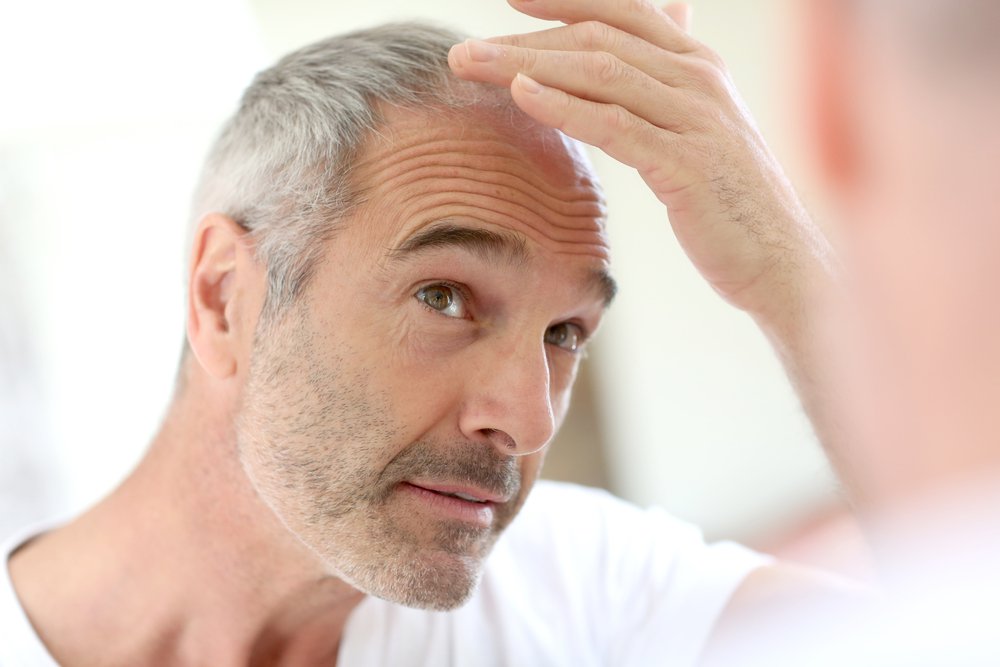 Hair loss will affect roughly 40% of women and 70% of men in their lifetime. Even though there are many individuals seeking help, the mainstream treatments that are available can be overly invasive, costly, or cause side effects that outweigh their benefit.
Hair loss will affect roughly 40% of women and 70% of men in their lifetime. Even though there are many individuals seeking help, the mainstream treatments that are available can be overly invasive, costly, or cause side effects that outweigh their benefit.
A form of regenerative medicine, platelet-rich plasma (PRP) takes an entirely new approach towards hair loss that doesn’t require any surgical procedures or medications. PRP is naturally derived, and it uses the natural healing process of the human body to target your hair loss at its roots—literally.
At The Colorado Center for Health and Longevity, we aim to provide patients with an environment conducive to both mental and physical well-being. We understand the value in helping patients feel more comfortable in their own skin. PRP is an incredibly promising approach towards treating hair loss, but because regenerative medicine is a relatively new field, it can be difficult to find substantial information on the subject.
To help our patients understand regenerative medicine like PRP for hair loss, we've created a list detailing what PRP is, how it treats hair loss, how safe it is, and how it stacks up against other therapies.
What is PRP Biologic Therapy?
Platelet-rich plasma (PRP) is derived from your own blood and is composed of two components:
- Platelets, a type of blood cell that promotes cellular repair.
- Plasma, the liquid portion of your blood.
To create platelet rich plasma, Dr. Levenson and his team will take a blood sample from a patient and place it within a centrifuge. The device will separate out the other components of the blood, leaving a high contraction of platelets and growth factors in the sample.
How Does PRP Treat Hair Loss?
Platelet-rich plasma therapy is a well-established treatment for a variety of musculoskeletal conditions, but it’s opened the door to a variety of new aesthetic treatments. More recently, studies on the efficacy of PRP injections for hair loss have shown to be incredibly promising.
While research on PRP is still ongoing, the current consensus is that platelets produce growth factors. These growth factors aid the body’s healing process. By localizing highly concentrated platelets to a specific region in the body, scientists believe that PRP promotes an accelerated recovery and regrowth process.
In terms of how PRP treats hair loss, research suggests that when platelets are precisely injected deep into the scalp are able to reach the bottoms of hair follicles where dermal papilla cells (cells that play a major role in hair growth) are located. The significant increase in concentration of platelets and growth factors is then believed to stimulate the healing process of these specialized hair-growth cells.
How Safe Is PRP For Treating Hair Loss?
PRP which utilizes natural growth factors is a low-risk, non-invasive procedure. The minor side effects of PRP hair treatment are a result of the procedure itself and not PRP, which is completely safe for the body. For those who do experience side effects, they generally consist of some tenderness around the injection site and potentially a headache.
If you do experience side effects, they will subside soon after the procedure is completed. A blood sample is taken to create the PRP for your treatment, so it’s a good idea to have a substantial meal and stay hydrated before your appointment.
How Does PRP Compare With Other Therapies?
Traditional Medications
Compared to other common hair loss treatments like the medications Minoxidil and Finasteride, the side effects of PRP are rather minimal and short term. Minoxidil may cause dryness and irritation along the scalp and Finasteride may cause sexual dysfunction in men.
Additionally, it will take several months to know whether or not these medications are effective, making the prospect of suffering their side effects without benefiting from their purpose an unfortunate possibility.
Corticosteroids
PRP is made up of your own cells and plasma which means the risk of an allergic reaction is incredibly low, unlike other injection-based medications like corticosteroids.
Also, while corticosteroids can slow hair loss and even induce hair growth, long-term use is not a viable option due to the serious and even life altering side effects that come with prolonged use of injected corticosteroids. These effects are not evident in less invasive injections like PRP.
Hair Transplants
Hair transplants are a well established hair loss treatment. It’s important to note that because it is a surgical procedure that requires cuts to be made into the scalp, the side effects are more severe, and there is a necessary recovery period afterwards.
Hair transplants are considered a permanent solution to hair loss due to its irreversible nature. Yet, because the natural healing process of the human body is not involved, this does not mean the transplanted hair will look the same after several years without any hair growth to supplement what is lost.
Compared with the alternatives, it’s easy to see why PRP is gaining traction as the best treatment for hair growth in terms of efficacy, safety, and convenience. PRP is at the forefront for treating hair loss. Dr. Levenson and the team at The Colorado Center for Health and Longevity are proud to be your source for PRP treatment in Greenwood.
Ready to feel your best with the help of PRP therapy? Don’t wait. Request an appointment at the Colorado Center for Health and Longevity now!

